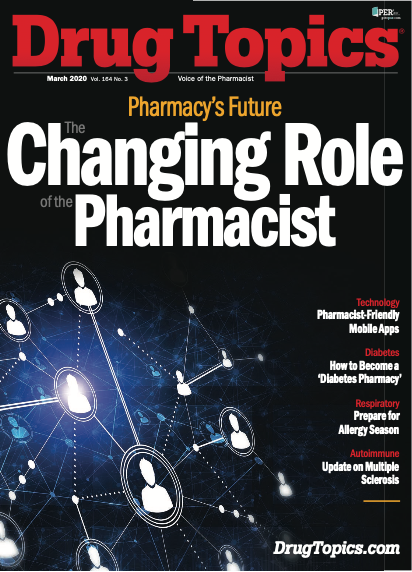Massachusetts Hospital Uses Telehealth to Increase Access to Opioid Treatment
A UMass Memorial telehealth-based program connects patients with credentialed clinicians who can prescribe medication-assisted treatment for opioid use disorder.

All-cause deaths dropped 59% for adults who received methadone within 12 months of an opioid overdose, according to a study published in the Annals of Internal Medicine.1 The study also found that taking buprenorphine within 1 year of an overdose led to a 38% reduction in all-cause deaths.
These 2 statistics spurred Kavita Babu, MD, chief of medical toxicology at UMass Memorial Health Care in Worcester, Massachusetts, to launch a telehealth-based program to connect patients with credentialed clinicians who can prescribe medication-assisted treatment (MAT). UMass Memorial is the second largest health system in Central and Western Massachusetts.
For context, the Massachusetts legislature passed a law in August 2018 requiring hospital emergency departments (EDs) to provide MAT to patients who present after an opioid overdose. To prescribe MAT, clinicians must have a Drug Enforcement Agency Category X waiver, which requires 8 hours of training. Seventy percent of UMass Memorial’s clinicians have participated in the training.
According to the CDC, Massachusetts ranked among the top 10 states with the highest rates of opioid overdose deaths.2 Synthetic opioids, mainly fentanyl, cause many of those deaths. The federal agency reports3 that opioids were involved in 68% of all drug overdose deaths in 2017. West Virginia, Ohio, and Pennsylvania had the highest rates of deaths due to drug overdose that year.
The patient experience
Since the UMass Memorial program launched in January, 1 patient has received a telehealth-based consult from a credentialed toxicologist. Babu described the patient as a young man with longstanding opioid use disorder. “He needed a prescription for Suboxone to continue treatment in a new facility,” she told Drug Topics®.
Babu explained that, 5 years ago, the opioid overdose treatment protocol started with a first responder providing naloxone to reverse a patient’s overdose. After arriving in the ED, the patient was told by a physician that they almost died. The physician also told the patient to stop taking drugs, gave them a list of community resources, and discharged them.
Today, at UMass Memorial - Marlborough Hospital, the patient presents in the ED, after getting naloxone. Then a clinician captures their history and their interest in MAT. If the patient agrees, the ED clinician connects the patient with one of the trained toxicologists on Babu’s team via a HIPAA-compliant telehealth platform.
The toxicologist’s goal is to empower the patient by getting them to take home a prescription for MAT, said Babu. After providing consent, the patient is sent home with a prescription and a handout prepared by the National Institute on Drug Abuse that asks a series of questions such as the number of hours since opioid use and the patient’s experience with symptoms such as yawning, nausea, and diarrhea. This guides the patient’s home induction of MAT, she explained.
Babu’s team developed an ED order set4 for buprenorphine-naloxone initiation.
Pharmacist engagement
Pharmacists have been at the forefront of creating access to naloxone and MAT, said Babu. That’s why they can help increase access to MAT, especially if clinicians at their hospitals aren’t trained or are resistant to providing treatment.
For example, a pharmacist in a rural ED could struggle to expand access to MAT treatment without trained prescribers in the hospital, said Babu. Ensuring that clinicians receive training is part of the solution, but clinicians also need access to decision support to determine the appropriateness, as well as the timing and safety of the approach, she added.
Hospital committees focused on pharmacy and therapeutics and ED oversight, where pharmacists are involved, should be interested in this offering, said Babu.
This initiative received $200,000 in funding from UMass Memorial Medical Group.
References:
1. Larochelle MR, Bernson D, Land T, et al. Medication for Opioid Use Disorder After Nonfatal Opioid Overdose and Association With Mortality: A Cohort Study. Ann Intern Med. 2018; 169:137–145. [Epub ahead of print 19 June 2018]. doi: https://doi.org/10.7326/M17-3107
2. National Institute on Drug Abuse. Massachusetts Opioid Summary. https://www.drugabuse.gov/opioid-summaries-by-state/massachusetts-opioid-summary Revised March 2019. Accessed February 13, 2020.
3. Centers for Disease Control and Prevention. Drug Overdose Deaths. https://www.cdc.gov/drugoverdose/data/statedeaths.html Last reviewed June 27, 2019. Accessed February 13, 2020.
4. Babu K, Lai J, Cushman P, et al. (2020) An emergency department order set for buprenorphine-naloxone (SUBOXONE®) initiation, Toxicology Communications, 4:1, 5-8, DOI: 10.1080/24734306.2019.1704978
